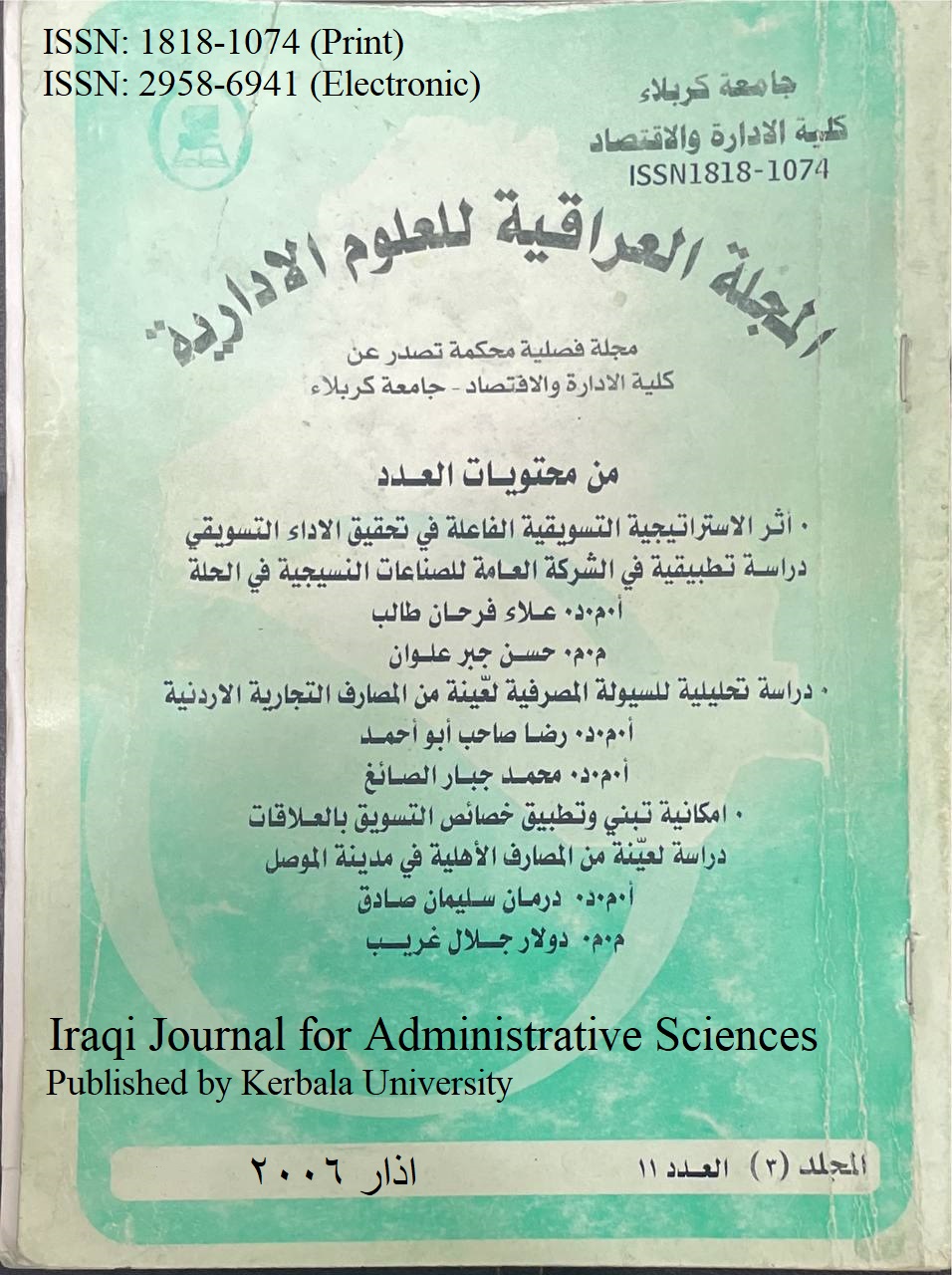The development of expatriate patterns as channels for foreign direct investment, from money and trade to services, in the case of Arab countries
Keywords:
Patterns of expatriation, investment channelsAbstract
It was stated in the fourth chapter of the World Investment Report for the year 2004, under the title: “The offshoring of corporate service functions: The next global shift?”, one of the most important titles that it focuses on in the study of expatriate financial centers, specifically Offshore Financial Centers, and despite the ambiguity of the term and concept and its translation into Arabic, it has been mentioned under multiple titles and contents, and today another development is emerging regarding the phenomenon of alienation, but not at the level of the market, branch, or institutional structure, but rather at the level of the jobs carried out by service companies, which in itself is considered a development. A significant and dramatic change in terms of the emergence of the service as a product alongside the commodity. Indeed, all expectations indicate that the current century will be a century of services and their dominance after the tremendous development that the world has witnessed in information and communications technology. The research deals with the phenomenon of alienation offshoring within three patterns that emerged in the second half of The twentieth century took several paths. The first path was financial, the second was commodity, and today the third path has emerged, which is functional. What is the nature of alienation and what is its relationship to foreign direct investment? How did it emerge as a phenomenon in finance, then trade, and finally service through the alienation of employment? The research aims to introduce this phenomenon, its dimensions, how it arose and why? Hence, where is our Arab region in relation to this phenomenon, and what are the competitive dimensions between countries to reach this position, and how did it move from a phenomenon adopted by countries to a phenomenon adopted by companies, and what are the components that companies look for to create an expatriate job?
The research adopts a scientific methodology based on discussing the phenomenon in terms of why and how, as they are the two questions that the research seeks to answer, within the discussion of the phenomenon that is the subject of the research, and then where are the Arab countries, their societies and their economies in relation to this phenomenon compared to what it is today in the world, and the main source of information will be reports Global Investment issued by UNCTAD and a number of other international reports.
Downloads
Published
How to Cite
Issue
Section
License
Copyright (c) 2006 College of Administration and Economics - University of Karbala

This work is licensed under a Creative Commons Attribution-NonCommercial-NoDerivatives 4.0 International License.
Authors retain the copyright of their papers without restrictions.




